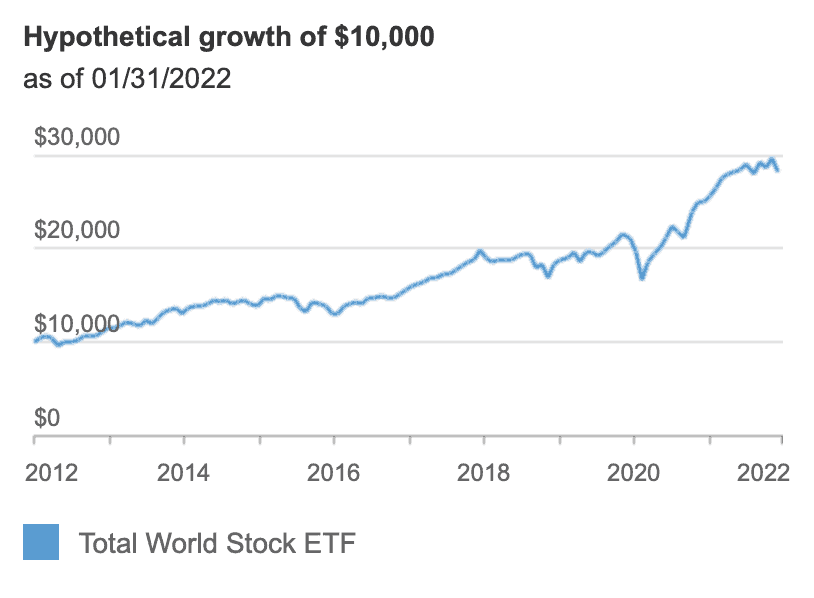Work shapes a third of our lives. If you’re unsure about how to genuinely feel […]
Here's my concise notes from Stock valuation to value the shares of a business from Adam Khoo's Piranha Profits Online Investment Course.
How do you value a stock
- PEG ratio: PE Ratio vs earnings growth rate (DCF)
- Discounted cash flow from operations (most accurate method) - You have to project future cash flow
- Discounted net income (DNI)
- Price to book value
- Price to sales growth ratio (for companies with negative or inconsistent CF, not profitable yet)
Valuation by PEG Ratio
When to use
- As a quick check to stock's value
- Only used when earnings is increasing consistently
- Least accurate, but give us an idea if the stock price is expensive or cheap
PE ratio (TTM) = price per share/earnings per share (TTM)
Compare PE ratio to earnings growth rate
In theory, PE ratio of a company should be equal to its earnings growth rate. If earnings is growing at 15% a year, then the PE ration should be 15 at fair value
PEG ratio = PE ratio/earnings growth rate
When the earnings growth rate is higher than PE ratio, it means that the stock is undervalued
- A stock is overvalued when PE ratio> earnings growth rate (PEG ratio>1)
- A stock is undervalued when PE ratio< earnings growth rate (PEG ratio<1)
Can consider a stock if PEG ratio is less than 1.5
Useful websites: Finviz and Simplywallst

Valuation by Discounted cash flow
When to use
- To calculate stock's intrinsic value
- When cash flow from operations is increasing consistently
- The intrinsic value of a stock is equal to the present value of its future cash flow from operations plus current net assets
What you need:
Current operating cash flow, total debt, cash and short term investments, cash flow growth rate (year 1- 20), no. of shares outstanding, current share price and discout rate
Output: PV of 20 year cash flow, intrinsic value per share before and after cash/debt, projected operating cash flow and discounted value
Valuation by Discounted net income
It is for projecting net income instead of cash flow
When to use
- Finance companies (insurance, brokers, asset management, credit cards). For banks, we use price to book ratio.
- Used when cash flow from operations is not increasing consistently (example Starbucks)
- Used when earnings are increasing consistently
What you need
Net income, total debt, cash and short term investments, cash flow growth rate (year 1- 20), no. of shares outstanding, current share price and discount rate
Output: PV of 20 year cash flow, intrinsic value per share before and after cash/debt, projected operating cash flow and discounted value
Valuation by Price to Book ratio
When to use
- when company has negative earnings (making losses, negative net income and cash flow)
- banks (Use PB ratio to value banks. Fair value for banks is PB ratio of 1-1.2)
- property developers and REITs
Price to book ratio
- compares the share price to book value per share
- underestimates value of a growing company
- stock price/book value per share
Book value
- liquidation value of a company
- total assets = intangible assets - total liabilities
- book value per share = book value/no. of shares
In theory, if the company close down you will get $x which is equivalent to the book value per share back. If PB ratio is 0.5 it means that you will get $1 worth of shares at liquidation. You want the ratio to be 0.5 or less, so you can get back more than you paid for.
Banks

Price to book ratio of DBS bank has been 1.11x for the past 10 years (average), so 1.11x is the fair price of DBS bank.
Useful websites: Yahoo Finance - statistics to see p/b

Useful websites: Finviz or Yahoo Finance for US banks
- Average PB for Bank of America: 1x
- P/B (30th Sep 2021): 1.46x
- Average PB for JPM: 1.4x
- P/B (30th Sep 2021): 1.99x
Property developers/ REITs
- Use PB ratio to determine the intrinsic value
Singapore REITS historical price/book ratio
Average P/B: 1.1
Look for dividend yield of at lest 5%
US REITS historical price/book ratio
Average P/B: 2.2
In US, book value of US REITs is smaller than Singapore's due to GAAP accounting rules. Assets are not valued at current market prices
Valuation by Price to Sales Growth ratio
This method is for new growth companies with strong revenue growth, but does not have a consistent track record of Cash Flow from Operations or Net Income.
Price to Sales (P/S) ratio = share price/ revenue per share
Price to Sales growth (PSG) ratio = P/S ratio/ revenue growth rate
A PSG ratio of 0.2 is a fair value. Above 0.2 is overvalued
Useful website: Reuters (key metrics)
There are 3 revenue metrics. To be conservative, take the lowest figure.
As a rule of thumb, the maximum revenue growth % should be cap at 100%

Thank you for reading my post! Please feel free to connect with me and get updated posts on Facebook.







